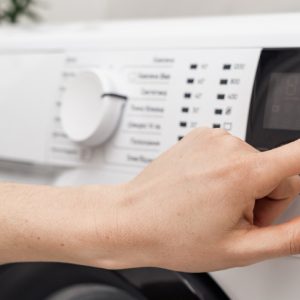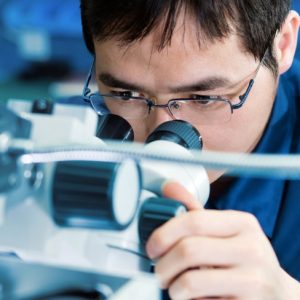The question is no longer whether AI at the edge is here to stay but what it takes to succeed in what is becoming an overly competitive field. That’s why we sat down with 221e, an Italian company and member of the ST Partner Program famous for sensor modules that take advantage of machine learning at the edge. The company offers three platforms that use an STM32 microcontroller and ST sensors: the NeuraTrack for rugged environments, the Mitch for research, and the Muse.
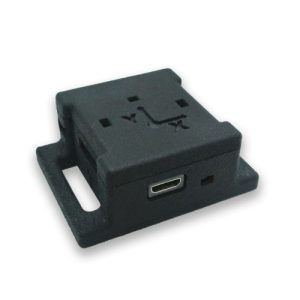
Each provides what the company calls Sensor Fusion AI or NeuraSense, a technology that feeds data from the embedded accelerometers, gyroscopes, and magnetometers to a neural network capable of recognizing activities or types of movements. NeuraSense is built on the 221e Motion Processing Engine, or MPE, that fuses multi-sensor IMU data. The ST Authorized Partner initially designed its MPE for life-saving applications with zero tolerance for errors. Consequently, it can deliver highly accurate results to inform a wide range of applications.
For the sake of conciseness, we’ll focus on the Muse, which houses an STM32WB5MMG module, and the LSM6DSO32 inertial sensor to track activity in mainstream and medical settings. The PCB is small, measuring only 22 mm x 22 mm, but it is powerful enough to sample inertial data at 1,600 Hz and send its capture using Bluetooth Low Energy 5.0. In fact, the company is using Muse systems in four Italian hospitals already. Knowing the stringent requirements health devices must meet, let’s explore how 221e leveraged ST components to bring AI to this platform and what lessons its teams learned along the way.
Table of Contents
The 221e journey: From ST dev kits to optimized applications
It starts with an idea: a module that’s much easier to certify
The Muse is 221e’s first device with a Bluetooth module, as the Mitch and NeuraTrack use BlueNRG processors. As the company explained,
“Using a module like the STM32WB5MMG means we don’t have to worry about qualifications. Because it includes the antenna, crystals, and is itself certified, it is much more straightforward to help clients get their RF certifications wherever they are in the world.”
It ends with a bang: using ST hardware to focus on innovative code
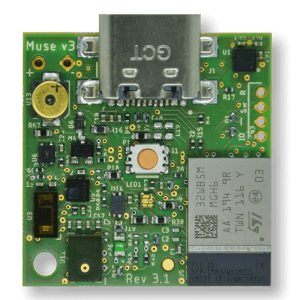
The ST Authorized Partner also shared how it often uses ST development kits in its operation. 221e emphasized how they rely on our hardware development tools, such as the STEVAL-STWINKT1B (STWIN), the STEVAL-STLKT01V1 (SensorTile), or the STM32WB5MM-DK, the first kit for the STM32WB5MMG module, among others. Their engineers take inspiration from the schematics we provide for free and use our specialists to accelerate design operations. It explains why the Muse managed to pack a lot of punch in a small form factor. However, the main reason for this approach is that it allows 221e to focus on its firmware. As 221e shared,
“We like to start our software development from scratch. By relying on ST’s hardware expertise, we can spend more time optimizing our code to extract as much power as possible in the most efficient way imaginable. We are talking about microcontrollers and sensors on battery-powered systems. Bringing AI to resource-constrained environments demands new levels of optimizations, and the best way for us to accomplish that is to use ST’s hardware expertise so we can focus on what we do best.”
In practice, this approach translated into 221e’s ability to create a remarkably flexible platform.
The lessons: Focusing on what matters
Lesson 1: Guarantee quality data and only worry about quantity
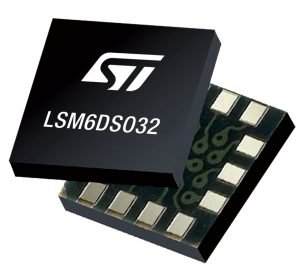
221e chose the LSM6DSO32 because, among other things, it enabled them to benefit from a high data rate while still getting precise measurements. The accelerometer can offer a range of ±4/±8/±16/±32 g, and the gyroscope supports an angular rate of ±125/±250/±500/±1000/±2000 degrees per second while the high-performance mode of the device only consumes 0.55 mA. Put simply, it enables the system to obtain quality data without sacrificing the power constraints inherent to a small system like the Muse. Consequently, 221e explained how they could focus on acquiring data rather than worry about the quality of the data.
The ST Authorized Partner placed Muse systems on various body parts to acquire an extensive data set of movements, which led the team to create more than 30 different classes of exercises. The company was able to collect millions of data points over 40 subjects during the span of six months, with at least 65,000 records for each class of activity. Moreover, the company can use the same system to improve its neural network model by continuing its data acquisition process. Since the Muse can acquire data and run the neural network algorithm, collecting new data and delivering updates remain cost-effective.
Lesson 2: Keep an eye on the future; being first isn’t the same as staying ahead
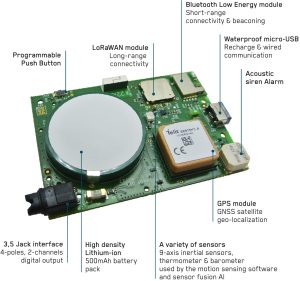
221e recently announced working on a platform that would use our new ISPU, the ISM330IS, a sensor with a processing unit capable of even greater computation without needing to wake up the microcontroller. The member of the ST Partner Program shared that the new capabilities offered by the ISPU led to greater power savings while opening the door to more complex neural networks. In a nutshell, even though 221e is ahead of the curve, it learned that it had to keep innovating by adopting new technologies quickly. One lesson that the company learned is that being first in machine learning at the edge doesn’t mean it will stay first for long.
The engineers behind the Muse also shared how they are experimenting with the STM32WL and its LoRa capabilities. The company is exploring new modes of communication beyond Bluetooth Low Energy. Indeed, a sub-GHz network could enable them to talk to a gateway and more rapidly send data to the cloud or create a large mesh network of devices. Hence, the lesson is not only to use the latest sensors and update the neural network but also to create greater communication networks to make the machine learning application more meaningful.



